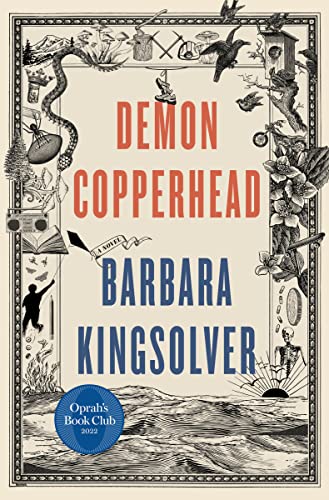Book Review: Demon or superhero? Rise or fall?
Published 6:00 pm Wednesday, March 22, 2023
By Susan Mah
Like Quentin Tarantino’s Pulp Fiction or Trevor Noah’s Born A Crime Barbara Kingsolver’s Demon Copperhead has an uncanny way of relating tragedy alongside comedy wherein you gasp in horror at onemom ent then laugh out loud at the next.
A literary remake of Charles Dickens’ David Copperfield, Kingsolver’s novel takes place in modern day Appalachia and is, in its very essence, a story about trauma, loss, and resilience.
Trending
The book opens with the main character, Damon Fields, arriving in the world “like a little blue prize fighter,” still inside the amniotic sac, which did not break at his birth. Due to this fact, he “always had a thing for the ocean.”
Damon’s mother is an addict, but is inspired by her son to go into rehab, eventually get sober, regularly attend 12-Step meetings, and get a job at the local Walmart. His father, who died before he was born, was a “guy named Copperhead.”
Like many of the characters in the story, Damon gets a nickname, “Demon Copperhead,” for his attitude
and copper-wire hair; however, Demon is a misnomer. From childhood to adulthood, Demon is respectful and deferential to his peers and adults.
He is only too aware of his sense of helplessness and states, “A kid is a terrible thing to be, in charge of
nothing.” After Demon becomes a school-aged child, his mother marries a man who ends up being an
arbiter of domestic violence. Demon’s mother had grown up as an orphan in foster care and, thus, the pattern repeats itself. By age 11, Demon has been passed around to different foster families and has experienced various forms of abuse and neglect.
The weight of the trauma is so heavy that he believes it would be better to be dead, like his parents and never-born brother, than to be an orphan.
Despite the many hardships, Demon states, “As a kid, you just accept different homes with different
rules,” which is exactly what he does. In his free moments, he draws superhero comics to cope with his
sense of powerlessness. Like the ebb and flow of the ocean, Demon’s periods of suffering, like all human suffering, come and go. Demon is finally placed in a safe and relatively nurturing foster home. For a while, his life is stable and he enjoys his 15 minutes of fame as a high school football star with all the perks that go along with it: plenty of food, popularity, bros, and girls.
Trending
Yet the ocean’s tide always goes out after it comes in, and Demon seriously injures one of his knees at a
football game. Ultimately, Demon is no longer able to play football for the team, walks with a limp, drops
out of high school, and becomes addicted to narcotics. Generational trauma repeats itself.
At the start of the book, Demon asserts, “Save or be saved; these are questions,” which are answered in
the narrative.
Aside from his resilience, what is most astonishing about Demon is his empathy and compassion
towards others in spite of all the abuse and torture he endures well into adulthood.
Life is harder than you ever think it will be, and what separates the good folks from the bad folks is how
we handle such hardship. We either rise above and treat others like we want to be treated. Or we carry
bitterness in our hearts and become no better than our worst demons.
In the final chapter, Demon and Angus are on a road trip to the ocean—finally!—a place he has longed
for and dreamed about ever since he was born in the amniotic sac. The tide rolls out and the tide rolls in.
“You want to think it’s not over until the last page,” he says. And for Demon and Angus, it most certainly
is not.






